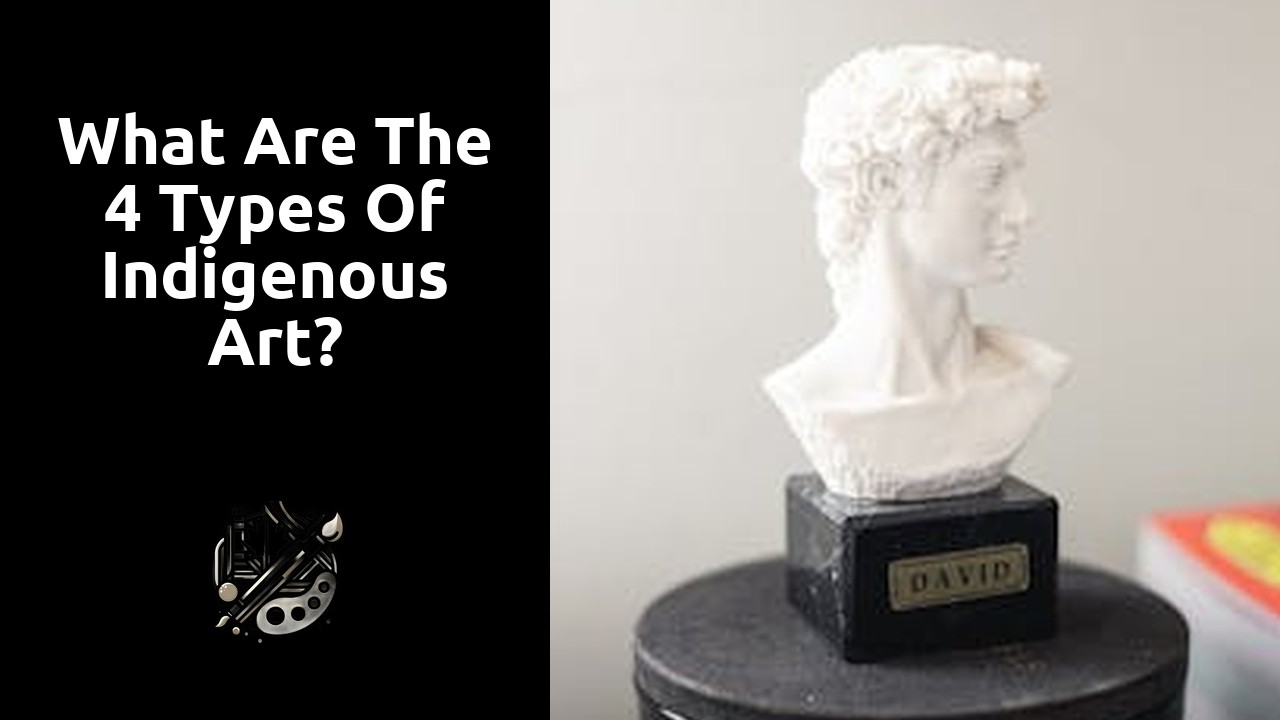What are the 4 types of Indigenous art?

Indigenous Art Influence
Indigenous art in Canada is a vibrant and integral part of the country's cultural fabric. It holds a significant influence on various art forms across the nation. The rich history and stories embedded in Indigenous art serve as a reservoir of inspiration for artists seeking to connect with the land and its people.
Traditional Indigenous art techniques and symbols have found their way into contemporary art practices, shaping new forms of expression and creativity. The use of vibrant colors, intricate patterns, and profound meanings in Indigenous artwork continues to captivate audiences and artists alike, leaving a lasting impact on the Canadian art scene.
Modern Art Movements
Modern art movements have greatly influenced Indigenous art practices, sparking innovative approaches and pushing boundaries. Artists have been inspired by the diversity of styles and techniques found in modern art movements, infusing traditional Indigenous art with contemporary elements. This fusion of old and new has led to the creation of unique pieces that stand out in the art world.
From abstract expressionism to surrealism, Indigenous artists have drawn inspiration from a wide range of modern art movements. These influences can be seen in the vibrant colours, bold shapes, and experimental textures found in many Indigenous artworks today. By embracing these modern art movements, Indigenous artists are able to express themselves in ways that resonate with both their cultural heritage and the contemporary art scene.
Indigenous Art Community
Indigenous art communities play a crucial role in the preservation and promotion of traditional art forms. These communities are vibrant hubs of creativity, where artists, artisans, and cultural enthusiasts come together to celebrate and showcase their heritage. Through various events, exhibitions, and collaborations, Indigenous art communities provide a platform for artists to express their unique perspectives and stories.
Furthermore, Indigenous art communities often serve as spaces for cultural exchange and dialogue, fostering a sense of unity and pride among community members. By supporting and uplifting Indigenous artists, these communities help to ensure that traditional art forms continue to thrive and evolve. In this way, Indigenous art communities not only contribute to the cultural landscape but also serve as beacons of resilience and cultural continuity.
Artisan Collaborations
Artisan collaborations play a crucial role in Indigenous art, fostering connections between artists, communities, and consumers. This type of collaboration often involves Indigenous artisans working together with individuals from diverse backgrounds to develop unique pieces that blend traditional techniques with contemporary influences. By coming together in these collaborations, artists can exchange ideas, share knowledge, and create art that celebrates cultural diversity while preserving traditional Indigenous practices.
Through artisan collaborations, Indigenous artists showcase their skills and cultural heritage to broader audiences, promoting awareness and appreciation for their art forms. Collaborative projects also provide opportunities for artists to learn from each other, adapt new techniques, and explore innovative ways to express their cultural identity through their art. By engaging in these collaborations, Indigenous artisans can continue to pass down their ancestral knowledge to future generations, ensuring the preservation and evolution of Indigenous art in a constantly changing world.
Indigenous Art Preservation
Preserving Indigenous art is crucial for safeguarding cultural heritage and honoring the traditions and stories of Indigenous communities. The longevity and significance of Indigenous art rely on effective preservation efforts that ensure these artworks are passed down through generations with their authenticity intact. By actively engaging with Indigenous artists, elders, and communities, preservation initiatives can benefit from a deep understanding of the cultural context in which these artworks were created.
Various methods are employed to conserve Indigenous art, ranging from proper storage techniques to utilizing advanced restoration practices. Digital archiving has also become increasingly important in preserving Indigenous art, allowing for wider access and long-term conservation. Collaborations between Indigenous artisans and conservation experts play a vital role in not only maintaining the physical integrity of these artworks but also in ensuring that the stories and traditions they carry are preserved for the future.
Cultural Heritage Conservation
Cultural heritage conservation is a paramount concern when it comes to preserving Indigenous art. This practice entails safeguarding the integrity and authenticity of artworks, ensuring that they are protected for future generations. Through meticulous documentation, proper storage, and controlled exhibition, efforts are made to prevent deterioration and maintain the cultural significance of these art pieces.
Conservation work also involves engaging with Indigenous communities to obtain their insights and knowledge about the artworks. By collaborating closely with artisans and artists, conservationists can better understand the materials, techniques, and symbolic meanings embedded in the art. This partnership not only enhances the conservation process but also fosters a deeper appreciation for the cultural heritage reflected in Indigenous art.
FAQS
What is the significance of Indigenous art influence in the art world?
Indigenous art influence brings unique perspectives, traditions, and stories that enrich the overall art landscape and challenge mainstream norms.
How do modern art movements incorporate Indigenous art?
Modern art movements often draw inspiration from Indigenous art techniques, symbols, and themes, leading to the creation of contemporary pieces that blend traditional and modern elements.
What role does the Indigenous art community play in preserving cultural heritage?
The Indigenous art community serves as a hub for cultural exchange, collaboration, and preservation of traditional practices, ensuring that Indigenous art forms are passed down to future generations.
How do artisan collaborations contribute to the promotion of Indigenous art?
Artisan collaborations between Indigenous artists and non-Indigenous creators help raise awareness about Indigenous art forms, support economic opportunities, and foster cultural exchange and understanding.
Related Links
What is the meaning of Indigenous art?Indigenous Art